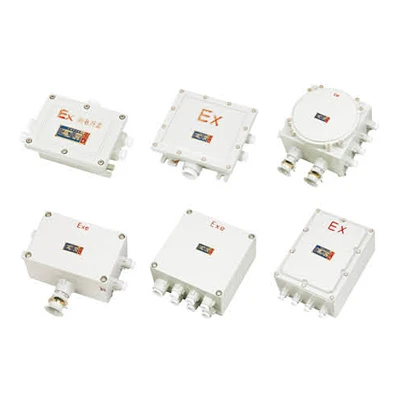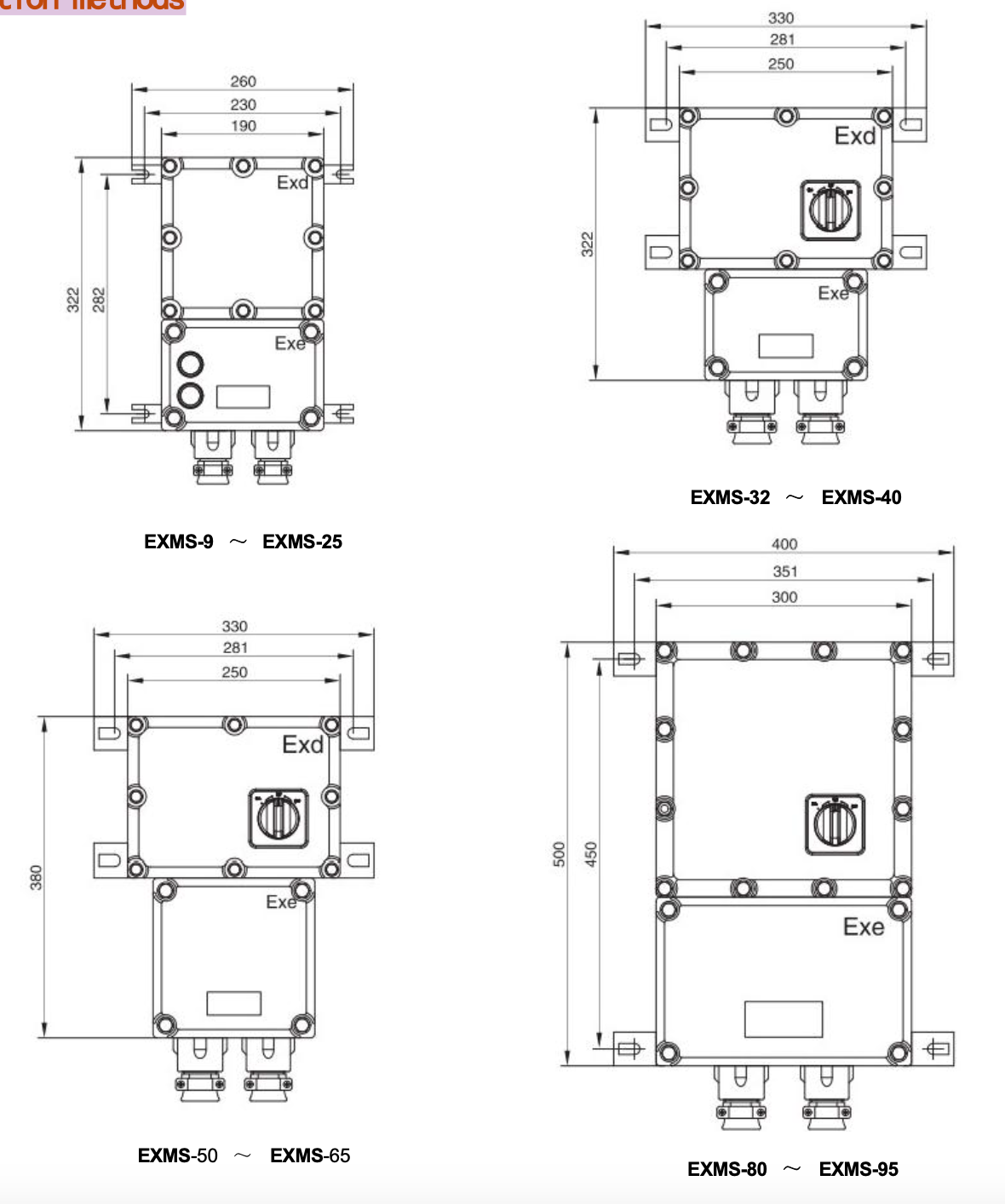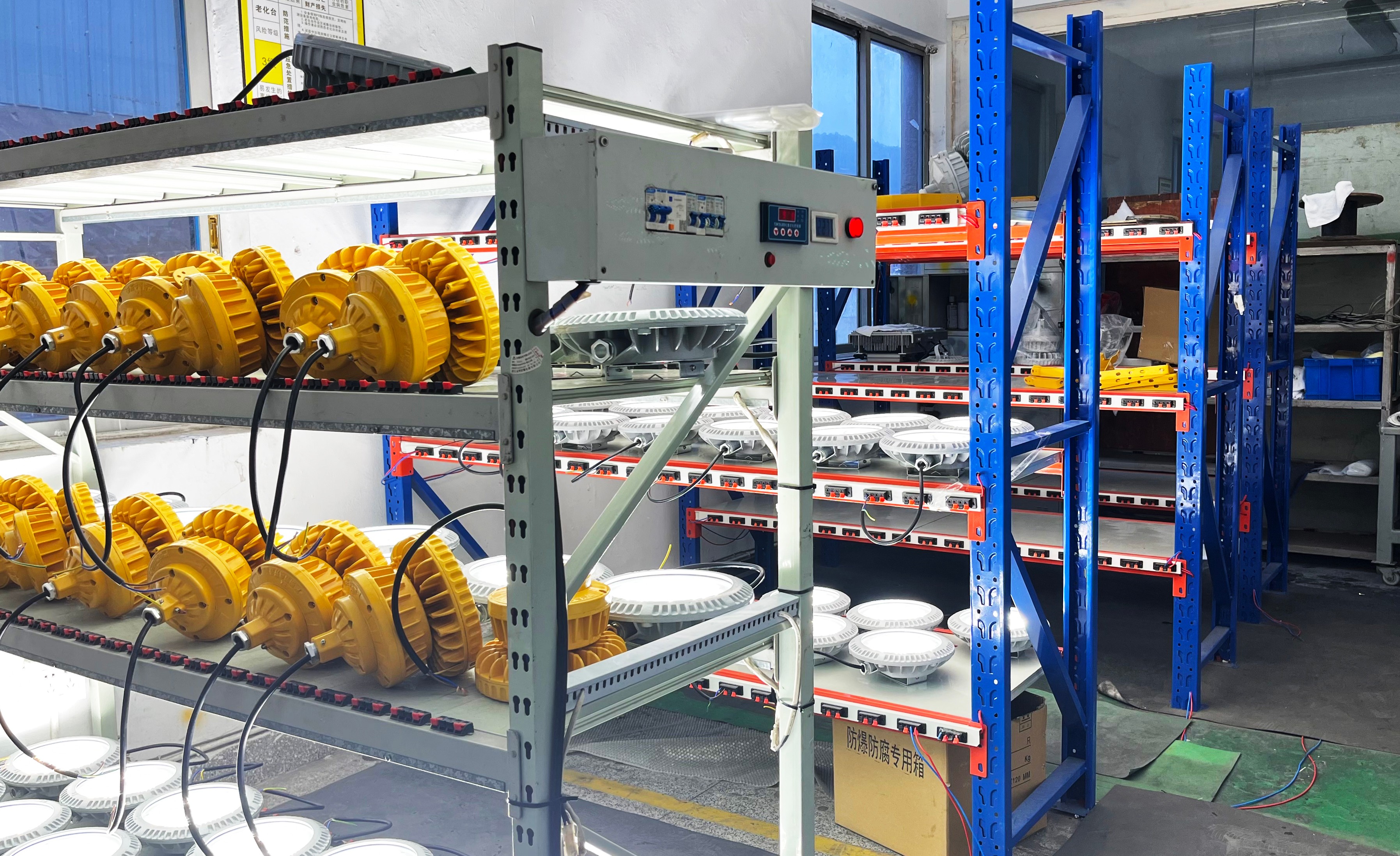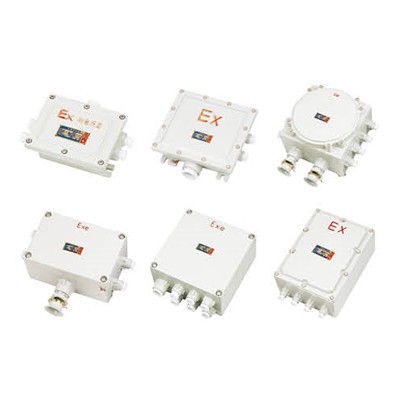Introduction

Understanding NEMA Ratings
NEMA ratings serve as a crucial guideline for selecting the appropriate enclosure type for various applications. Each NEMA type indicates specific characteristics regarding protection against elements like water, dust, and corrosive substances. For instance, while a NEMA 4 enclosure offers robust protection against water ingress and windblown dust, a NEMA 3R electrical enclosure is designed primarily for outdoor use but may not provide the same level of water resistance.
Importance of Explosion-Proof Solutions
In industries where flammable gases or vapors are present, explosion-proof solutions are not just important; they are essential for safety and compliance with regulations. Utilizing equipment that meets specific NEMA ratings ensures that potential ignition sources are contained within enclosures designed to prevent explosions from spreading to the surrounding environment. This makes understanding what NEMA rating is explosion proof vital for anyone responsible for maintaining safety standards in such settings.
How NEMA Ratings Impact Safety
NEMA ratings significantly impact overall safety by dictating how well an enclosure can protect sensitive electrical components from environmental hazards and potential explosions. By choosing the right enclosure based on its NEMA type—such as a durable NEMA 4X that offers additional corrosion resistance—companies can mitigate risks associated with hazardous materials effectively. Ultimately, proper knowledge of NEMA enclosure ratings empowers businesses to make informed decisions that enhance workplace safety.
What Are NEMA Ratings?

NEMA ratings serve as a standardized classification system for electrical enclosures, ensuring that they meet specific performance and safety criteria. These ratings are crucial in determining how well an enclosure can protect electrical equipment from environmental factors such as dust, moisture, and hazardous conditions. Understanding what NEMA ratings entail is essential for selecting the right type of enclosure for your application's needs.
Definition and Purpose
At its core, a NEMA rating defines the degree of protection an electrical enclosure offers against various environmental threats. The National Electrical Manufacturers Association (NEMA) established these ratings to help manufacturers and consumers identify suitable enclosures for different applications. By understanding these ratings, you can better assess which enclosure NEMA type is explosion-proof or best suited for your specific requirements.
Overview of Different NEMA Types
There are numerous NEMA types, each designed to meet particular environmental challenges faced by electrical equipment. For example, the NEMA 3R electrical enclosure offers protection against rain and snow but may not be suitable for corrosive environments like a NEMA 4 enclosure would be. On the other hand, specialized types such as NEMA 7 and NEMA 9 are explicitly designed for potentially explosive atmospheres, making them essential in industries where safety is paramount.
Key Features of NEMA Ratings
The key features of NEMA ratings revolve around their ability to specify the level of protection offered by an enclosure against various hazards. These include resistance to water ingress, dust penetration, corrosion resistance, and even potential explosive environments—like those defined under what nema rating is explosion proof guidelines. Additionally, understanding features like the difference between a nema 4x (which provides additional corrosion resistance) versus a standard nema 4 enclosure can greatly inform your decision-making process when selecting equipment.
What NEMA Rating Is Explosion Proof?

Specific Ratings for Explosion-Proof Devices
The primary ratings that indicate explosion-proof capabilities are NEMA 7 and NEMA 9. These classifications specify enclosures that protect against ignition from internal sparks or arcs in environments with flammable gases or vapors (NEMA 7) and combustible dust (NEMA 9). When selecting equipment for potentially explosive atmospheres, it’s essential to ensure that the chosen devices meet these specific NEMA ratings to guarantee safety and compliance.
In addition to these critical ratings, other enclosure NEMA types may offer varying degrees of protection from environmental factors but do not specifically address explosion risks. For instance, a NEMA 4 enclosure provides protection against water ingress and dust but lacks the specialized features required for explosive environments. Therefore, understanding which NEMA type aligns with your needs is vital when considering safety measures.
NEMA 7 and NEMA 9 Explained
NEMA 7-rated enclosures are designed for use in locations where flammable gases or vapors may be present in the air under normal atmospheric conditions. These enclosures must be constructed robustly to contain any potential explosions generated internally while preventing external ignition sources from entering. This makes them ideal for industries such as oil and gas, chemical processing, and pharmaceuticals.
On the other hand, a NEMA 9 enclosure caters specifically to environments filled with combustible dusts—think grain silos or woodworking facilities—where dust accumulation can ignite under certain conditions. Both of these ratings play a pivotal role in determining what nema rating is explosion proof; thus understanding their differences is essential when selecting equipment that meets industry standards for safety.
Choosing between these two types also involves evaluating additional factors such as temperature ranges and installation requirements. Each application will have unique demands influenced by environmental conditions; therefore, consulting with experts about your specific needs can lead you toward the right decision regarding your explosion-proof solutions.
The Role of NEMA Enclosures
NEMA enclosures serve as protective barriers against environmental hazards while ensuring operational integrity within hazardous areas. The right enclosure not only shields sensitive electrical components but also complies with necessary regulations regarding safety standards—especially when dealing with what nema rating is explosion proof devices like lighting fixtures or control panels used in risky settings.
A well-designed enclosure plays a significant role in maintaining safe operations by preventing contaminants from reaching sensitive equipment while also allowing heat dissipation where necessary—a key factor for longevity and performance reliability of electrical systems housed within them. Whether it's a robust nema 4x enclosure designed for wet locations or a nema 3r electrical enclosure meant for outdoor use without direct exposure to rain, each type has its purpose based on environmental challenges faced by users.
Ultimately, selecting an appropriate enclosure based on its corresponding rating ensures not only compliance with legal standards but also enhances overall workplace safety by minimizing risks associated with explosive atmospheres. With advancements in technology constantly evolving our options for protective solutions, being informed about current standards will keep you ahead of potential hazards related to your industry’s unique requirements.
NEMA Enclosure Ratings: What You Need to Know

When it comes to ensuring safety and functionality in various environments, understanding NEMA enclosure ratings is essential. These ratings help determine which enclosures are suitable for specific applications, particularly where hazardous conditions may arise. Whether you’re dealing with moisture, dust, or explosive atmospheres, knowing the right NEMA type can make all the difference.
Overview of NEMA Enclosure Ratings
NEMA enclosure ratings provide a standardized way to classify enclosures based on their ability to protect electrical equipment from environmental hazards. Each rating specifies how well an enclosure can withstand elements like water, dust, and other contaminants while maintaining operational integrity. This classification is crucial for industries that require explosion-proof solutions; thus, understanding what NEMA rating is explosion proof becomes paramount.
NEMA ratings range from basic protection against dust and water (like NEMA 1) to specialized designs for harsh environments (such as NEMA 7 or 9). For instance, a NEMA 4 enclosure offers protection against splashing water and external ice formation while a more robust NEMA 4X variant provides additional corrosion resistance. Knowing these distinctions ensures you select the right enclosure for your specific needs.
Differences Between NEMA 3R and NEMA 4 Enclosure
While both the NEMA 3R and NEMA 4 enclosures offer solid protection, they cater to different requirements in terms of environmental exposure. The primary distinction lies in their resistance capabilities; a NEMA 3R electrical enclosure is designed primarily for outdoor use with rain and sleet but lacks full waterproofing features found in a NEMA 4 enclosure. In contrast, the latter provides superior protection against not only water but also windblown dust.
This means that if your application involves exposure to more severe weather conditions or requires higher durability standards, opting for a NEMA 4 enclosure would be wise. Additionally, if you're considering equipment that might be subject to washdowns or high-pressure cleaning processes—think food processing plants—a robust option like the NEMA 4X would be even better suited than standard types like the NEMA 3R electrical enclosure. Understanding these differences helps ensure compliance with safety regulations while maximizing equipment longevity.
Choosing the Right NEMA Type for Your Needs
Selecting the appropriate type of enclosure requires careful consideration of your operational environment and specific application needs. First off, assess your location's environmental factors—will it be exposed to moisture? Is there potential for explosive gases? Answering these questions will guide you toward determining what nema rating is explosion proof or which other ratings might suffice.
Next, consider compliance requirements relevant to your industry; certain sectors have stringent regulations regarding equipment housing due to safety concerns involving flammable materials or corrosive substances. For instance, if you're working in an oil refinery where explosions could occur easily due to volatile compounds present in the air, opting for enclosures rated as explosion-proof—like those meeting standards set by both NEC (National Electrical Code) and NFPA (National Fire Protection Association)—is non-negotiable.
Finally, don't hesitate to consult with experts who can provide insights tailored specifically toward your unique situation; professionals like Jinrong often have invaluable experience navigating complex requirements associated with selecting proper enclosures such as nema ratings applicable across various industries.
Real-World Applications of Explosion-Proof Equipment

When it comes to explosion-proof solutions, understanding the real-world applications is essential. Industries that deal with flammable materials or hazardous environments often rely on specific NEMA ratings to ensure safety and compliance. From oil refineries to chemical plants, knowing what NEMA rating is explosion proof can mean the difference between safety and disaster.
Industries That Require Explosion-Proof Solutions
Several industries necessitate the use of explosion-proof equipment due to their operational environments. The oil and gas sector is a prime example; here, volatile substances are commonplace, making NEMA enclosure ratings critical for maintaining safety standards. Similarly, the pharmaceutical industry must adhere to strict regulations regarding flammable chemicals, further emphasizing the need for appropriate NEMA types in their facilities.
Manufacturing plants that handle combustible dust are also at risk; they often require specialized enclosures like NEMA 4X or NEMA 3R electrical enclosures to protect against potential explosions. Additionally, food processing facilities must consider hygiene as well as safety when selecting equipment; hence explosion-proof lighting and machinery are vital for compliance with health standards. In essence, any industry where flammable materials exist should prioritize understanding what NEMA rating is explosion proof.
Examples of Explosion-Proof Lighting and Equipment
Explosion-proof lighting solutions are designed specifically for hazardous locations where traditional fixtures may pose risks. For instance, LED lights with a NEMA 7 rating can be safely used in areas where explosive gases may be present without compromising illumination quality or safety. Other examples include various types of motors and switches that meet stringent NEMA enclosure ratings tailored for explosive environments.
Equipment such as pumps and valves also come in explosion-proof variants; these items often carry specific ratings like NEMA 9 for areas with dust hazards that could ignite under certain conditions. Choosing the right type of enclosure—whether it’s a robust NEMA 4 enclosure or an even more resilient NEMA 4X—ensures not only compliance but also operational efficiency in challenging settings. Understanding how different products align with various NEMA types is crucial for ensuring optimal performance while safeguarding personnel.
Case Studies and Success Stories
Real-world success stories highlight how businesses have effectively implemented explosion-proof solutions tailored to their needs. For example, an oil refinery upgraded its lighting systems using fixtures rated under what nema rating is explosion proof; this resulted in enhanced visibility while reducing maintenance costs significantly due to improved durability against harsh conditions. Another case involved a chemical plant that adopted a complete line of equipment featuring high-rated enclosures like the nema 3r electrical enclosure which successfully mitigated risks associated with chemical spills.
In a notable success story from the food processing sector, a facility retrofitted its existing machinery with components rated under both NEMA 4X and other suitable classifications; this not only improved workplace safety but also streamlined production processes by minimizing downtime caused by equipment failures due to environmental factors. These examples underscore how understanding and utilizing proper nema ratings can lead to safer work environments while promoting business continuity across industries.
Considerations for Selecting Explosion-Proof Equipment

Selecting explosion-proof equipment isn’t just about picking the latest shiny model; it’s a critical decision that can impact safety and functionality in hazardous environments. Understanding the nuances of NEMA ratings is essential, as these ratings dictate how well an enclosure can protect against various environmental factors. When choosing the right NEMA type, one must consider not only the specific needs of the application but also how those needs align with compliance standards and industry best practices.
Factors to Consider When Choosing NEMA Enclosures
When determining what NEMA rating is explosion proof for your application, consider factors such as environmental conditions, potential hazards, and equipment compatibility. For instance, if your equipment will be exposed to moisture or dust, you might lean towards a NEMA 4 enclosure or even a NEMA 4X for added protection against corrosion. Additionally, evaluating whether you need a NEMA 3R electrical enclosure versus something more robust like a NEMA 7 will depend on your specific location and operational risks.
Another factor to keep in mind is temperature range; certain enclosures are designed to withstand extreme temperatures that could affect performance and safety. Always remember that not all NEMA types are created equal—each type has distinct features tailored for different applications. Ultimately, aligning your choice with both operational requirements and safety standards is key to ensuring long-term reliability.
Compliance and Certification Requirements
Navigating compliance and certification requirements can feel like traversing a minefield when selecting explosion-proof equipment; however, it's crucial for ensuring safety in hazardous environments. Each NEMA rating comes with its own set of guidelines that manufacturers must comply with to guarantee their products meet industry standards for protection against explosions or other hazards. Familiarizing yourself with these requirements helps ensure you choose an enclosure that meets both local regulations and industry-specific mandates.
Moreover, certifications from organizations like Underwriters Laboratories (UL) provide additional assurance regarding the reliability of your chosen equipment's protective capabilities. For instance, if you're considering a NEMA 4 enclosure or any other rated type, make sure it holds relevant certifications confirming its suitability for explosive atmospheres. This diligence not only enhances workplace safety but also protects your investment by reducing potential liabilities associated with non-compliance.
Insights from Experts like Jinrong in the Field
According to experts like Jinrong in the field of industrial safety solutions, understanding what NEMA rating is explosion proof goes beyond just knowing numbers—it's about comprehending their practical implications in real-world scenarios. Jinrong emphasizes the importance of conducting thorough risk assessments before selecting any enclosure type; this ensures that all potential hazards are taken into account when making decisions around equipment protection levels.
Experts often recommend consulting directly with manufacturers or suppliers who specialize in explosion-proof solutions since they can provide insights into which specific NEMA ratings would best suit unique operational demands—be it a robust NEMA 3R electrical enclosure or a versatile option like a NEMA 4X unit designed for harsher environments. Ultimately, leveraging expert knowledge while also considering manufacturer specifications leads to more informed choices that prioritize safety without sacrificing performance.
Conclusion

In summary, understanding NEMA ratings is crucial for anyone involved in industries where safety is paramount, particularly when dealing with explosion-proof solutions. With specific ratings like NEMA 7 and NEMA 9 designed to protect against hazardous conditions, knowing what NEMA rating is explosion proof can save lives and ensure compliance with safety standards. Remember that not all NEMA enclosure ratings offer the same level of protection; thus, careful consideration is necessary when selecting the appropriate enclosure type for your specific needs.
Key Takeaways on NEMA Ratings
NEMA ratings serve as a standardized way to classify the suitability of electrical enclosures for various environments. Each NEMA type has distinct features that cater to specific environmental challenges, such as moisture, dust, and explosive gases. For instance, while a NEMA 4 enclosure provides excellent protection against water and dust ingress, it may not be suitable for environments requiring explosion-proof capabilities—this is where understanding which what NEMA rating is explosion proof becomes essential.
How to Choose the Right NEMA Enclosure
Choosing the right enclosure involves evaluating several factors including environmental conditions and compliance requirements. Start by identifying your operational environment: will you need a NEMA 3R electrical enclosure for outdoor use or a more robust option like a NEMA 4X for corrosive atmospheres? Always ensure that the selected enclosure meets your safety requirements while also considering future needs; after all, investing in quality now can save you headaches later.
The Future of Explosion-Proof Technologies
As industries evolve and technology advances, we can expect significant improvements in explosion-proof technologies and their corresponding NEMA ratings. Innovations may lead to more efficient designs that provide better protection while being easier to install and maintain. With increasing emphasis on safety regulations across various sectors, understanding what NEMA rating is explosion proof will remain essential as we move into an era where safety technology continues to advance at an unprecedented pace.

